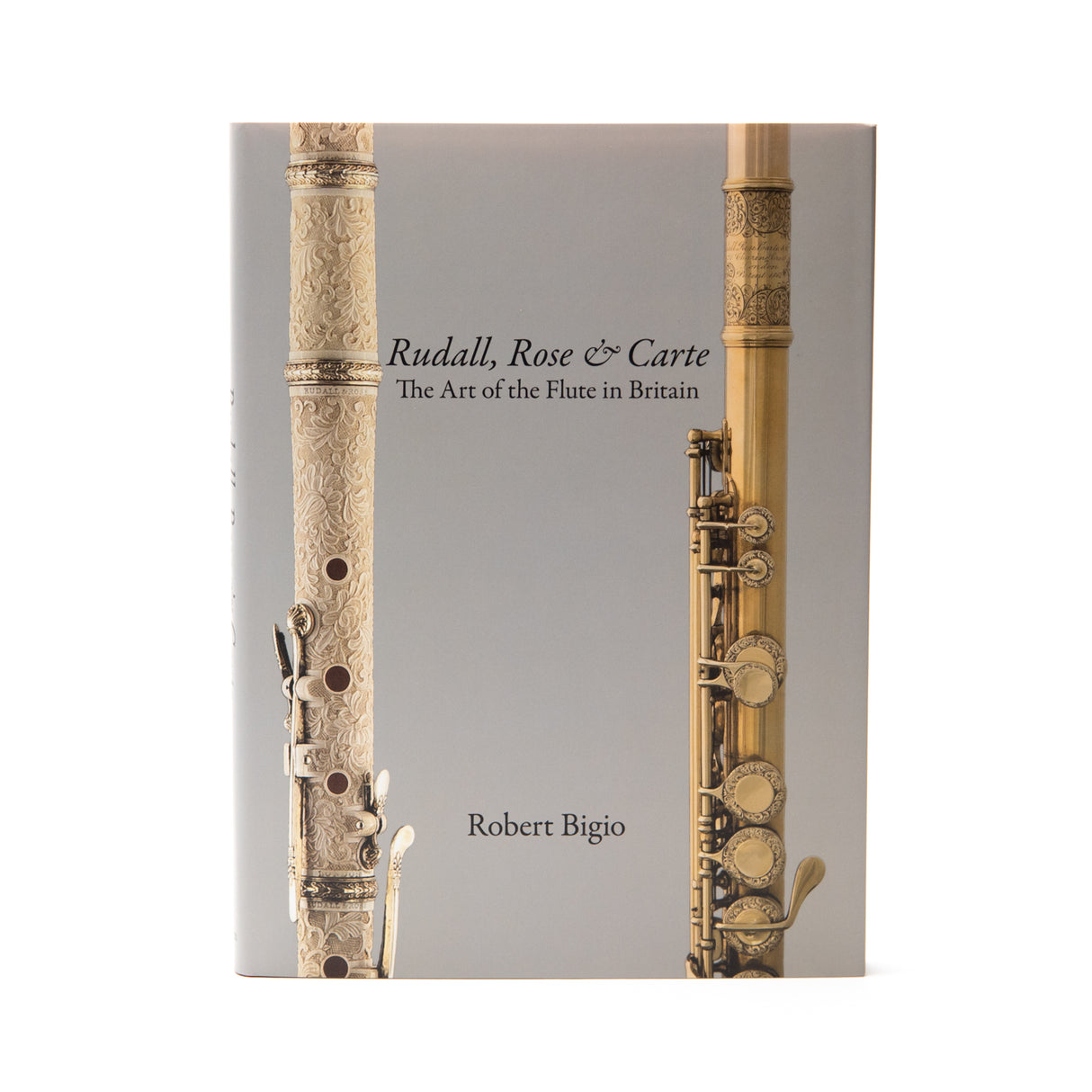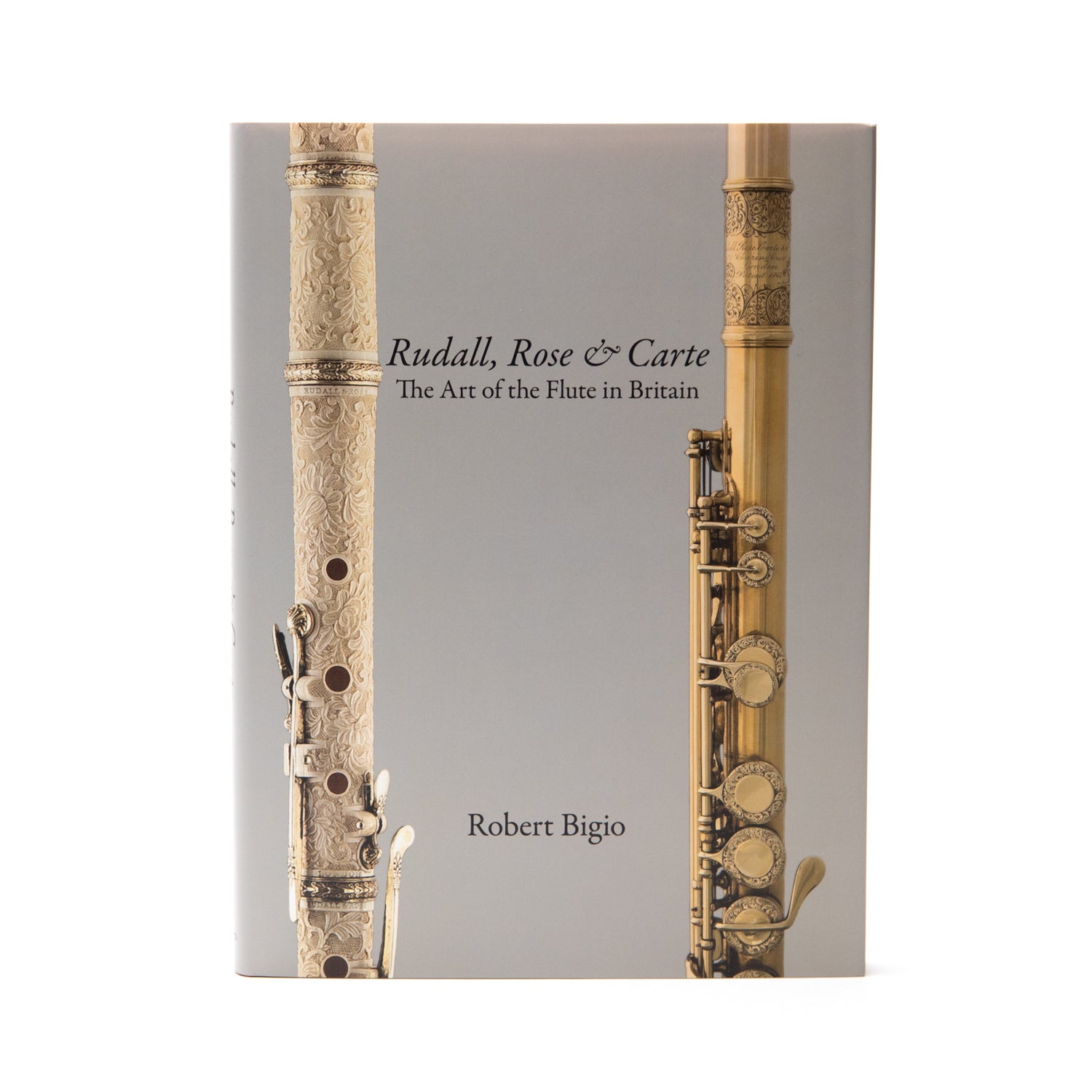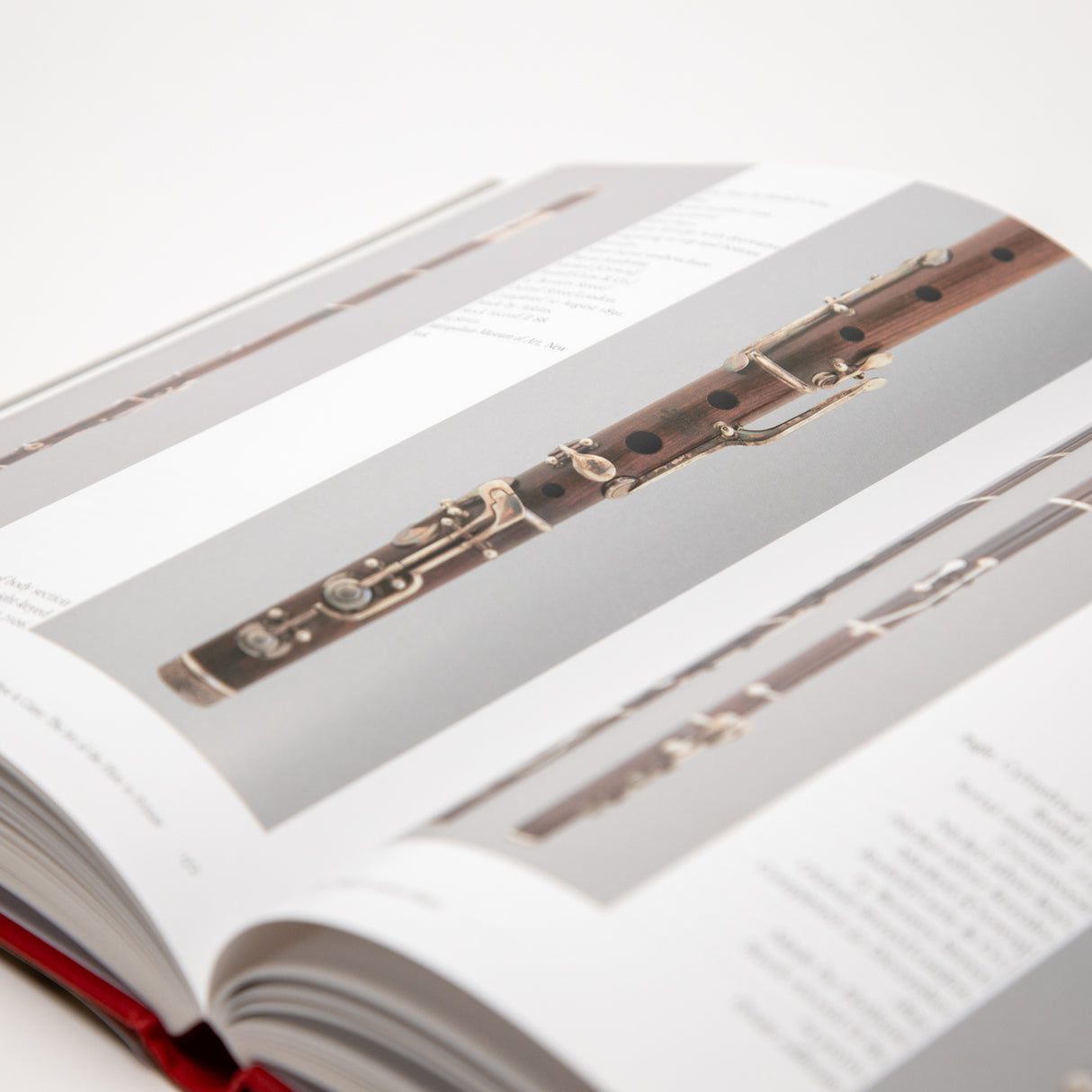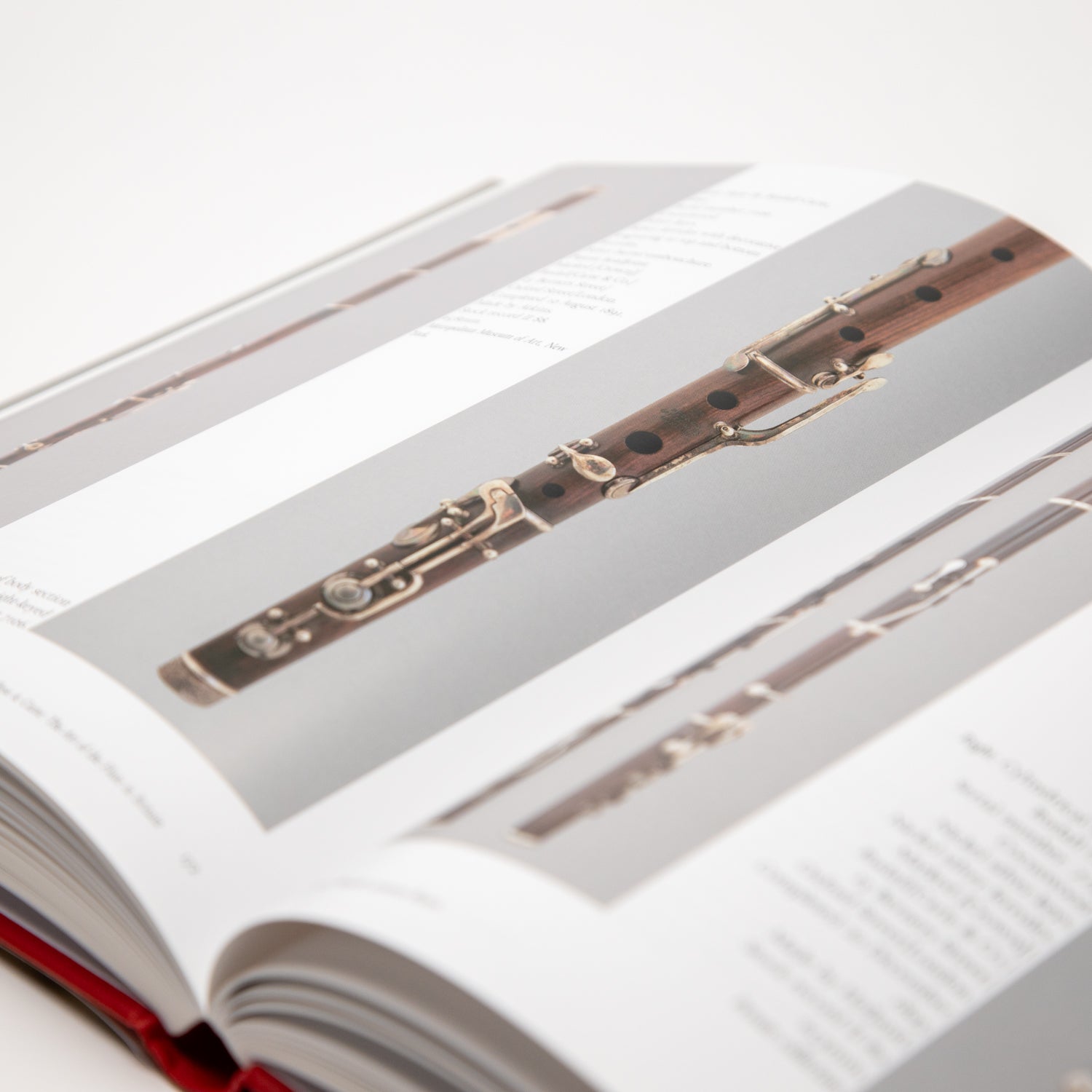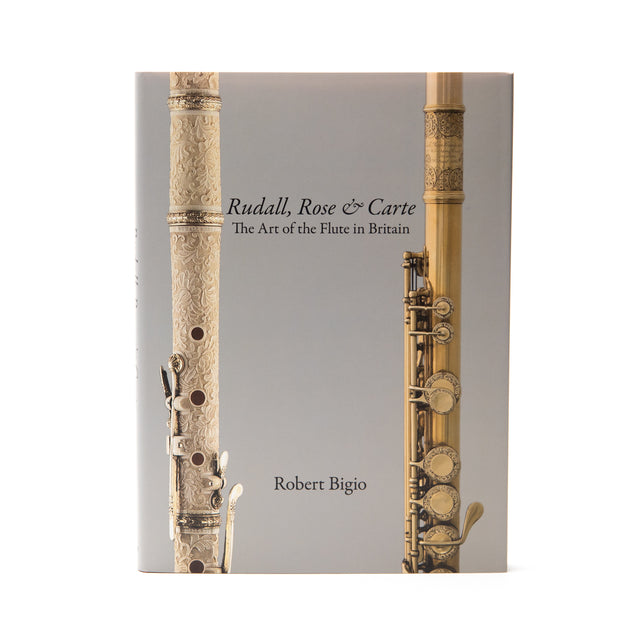Robert Bigio. Published 2011. Hardbound. 336 pages. 264mm by 196mm.
The firm of Rudall & Rose, later Rudall, Rose & Carte, and finally Rudall Carte, dominated flute making in Britain for a century and a half from their founding in 1822. For much of their existence almost every professional flute player and most serious amateurs in Britain played on one of this firm’s instruments.
The original firm, Rudall & Rose, produced simple-system flutes of the highest quality before they were persuaded by Richard Carte, a student of George Rudall, to begin production of Theobald Boehm’s early conical flute. The firm went on to buy the British rights to manufacture Boehm’s 1847 cylindrical flute, which is the basis of the instrument most flute players use today. Richard Carte, a brilliant businessman, joined the firm as a partner in the early 1850s and transformed them from a small business producing high-quality flutes to a hugely-successful concern that produced and sold flutes and most other instruments as well as publishing books, music and, for eight decades, The Musical Directory, an annual guide to the music business in Britain. Rudall, Rose & Carte, as they became, bought the business of Thomas Key, military musical instrument maker, adding brass and percussion instruments to their catalogue. In addition to their instruments and publications, the firm promoted concerts, for a time under the management of Richard Carte’s son, Richard D’Oyly Carte, who later made his fortune promoting the operas of Gilbert & Sullivan. The firm became Rudall, Carte & Company in 1872.
This book is a comprehensive history of the firm and contains detailed descriptions of the many innovative instruments they made. There are hundreds of colour photographs of flutes, alto flutes, bass flutes and piccolos, each shown in at least two views, and where necessary in three or four views with photographs of details. The firm’s output is shown in context with photographs of dozens of flutes made by their competitors including Willis, Prowse, Monzani, Wood, Wylde, ‘Pratten’s Perfected’ by Boosey & Co., Fentum, Godfroy, Koch, Boehm, Laurent, Gerock, Badger, Ward, Card, Siccama, Clinton, Lot, Collard and Boehm & Mendler.
The book includes a lavishly-illustrated Gallery containing hundreds of photographs:
- Simple-system flutes by George Rudall and by John Mitchell Rose before they formed their partnership; by Rudall & Rose; by Rudall, Rose & Carte; and by Rudall Carte
- Advanced simple-system flutes, including Carte’s ‘Old System’ and flutes made to Clinton and Siccama systemsBoehm flutes with ring keys, both conical and cylindrical
- Modern-style Boehm flutes
- Carte’s 1851 Patent flutes
- Carte’s 1867 Patent flutes
- Radcliff flutes
- Unusual flutes, including those made to special order for the inventors Mathews, Martin and Welch
Appendices include addresses, dates and serial numbers; workshop photographs; design features of Rudall Carte flutes; price lists; and fingering charts.
Condition:
Condition: Details:
Payment & Security
Payment methods
Your payment information is processed securely. We do not store credit card details nor have access to your credit card information.

